The most common gooseberry diseases: symptoms and treatments
Thorny gooseberry bushes, beloved by many gardeners, unfortunately, are very vulnerable to various diseases and pests. Biological threats can not only destroy the crop, but destroy the plant itself, so it is necessary to start a fight in time and save the bushes from destruction. In total, there are more than 75 diseases that can affect this plant, but only a few of them are the most common and most dangerous.
Content:
- Powdery mildew - spheroteka
- White spot - septoria
- Anthracosis - fungal infection
- Gooseberry mosaic
- Gray rot
Powdery mildew - spheroteka
The most dangerous gooseberry diseases are infections with pathogens and fungi that can be carried by the wind.
It is important to know what conditions can provoke the development of diseases in order to ensure proper preventive measures. Let's take a closer look at several of the most famous and common diseases.
This problem is familiar to many gardeners, since the disease occurs in almost all regions of Russia, it is especially widespread in the middle lane. The first sign of this disease is the appearance of a white bloom, which will affect leaves, fruits, and young shoots. Initially, it has a cobweb or powdery structure, for which the disease acquired its name.
Over time, the plaque becomes thicker, the shoots begin to lag behind in growth, and then they completely begin to fade and die. Spheroteka is capable of completely destroying the bushes, so you need to move on to active actions as soon as possible.
Powdery mildew pathogen loves humidity, therefore, favorable conditions for him are damp weather, frequent watering and bushes that are too close to each other.
How to deal with this unpleasant disease? In gardening, both scientific means and folk methods are actively used, which also managed to prove their effectiveness:
- In the fight against the disease, spraying using a solution of ferrous sulfate helps. Can also be used infusion of fresh mullein, which is applied before flowering begins.
- At the very beginning of the disease, it is necessary to remove all affected leaves, ovaries and shoots. They must be burned so that the causative agents of the disease are not transmitted to other plants.
- If the disease has already gone far, spraying with a special preparation is used: "Fitosporin" is diluted according to the instructions, it is necessary to strictly follow the recommendations for use. With its help, you can achieve a successful release of the bushes from the disease.
In addition to control methods, one should not forget about preventive measures: the soil under the bushes must be dug up in spring and autumn, mulch is introduced into it in the spring so that moisture does not stagnate near the roots. In addition, initially they try to choose bushes that are resistant to powdery mildew for planting.
White spot - septoria
This is another common disease that can be very difficult to cope with. It manifests itself in education gray spots on leaf blades... Gradually, black dots appear on the gray spots: the fungus forms spores, which later become the causative agents of the disease.The affected leaves dry out quickly and begin to fall off prematurely, the bushes eventually remain completely bare, and the crop completely dies.
In the fight against septoria, it is precisely prevention that is important: after falling off, the leaves must be removed from under the bush, and the remains are embedded in the soil.
- If affected leaves appear, they must be immediately cut off and burned, and if the disease has covered the entire bush, then chemical control methods must be used:
- If the disease has already affected the plants, in the spring the soil and the bushes themselves are thoroughly sprayed with nitrafen, and a solution of copper sulfate is also effective. It is necessary to carry out processing as early as possible, even before the leaves bloom.
- Another remedy to combat white spot - Bordeaux liquid, which is diluted in the amount of 100 g in 10 liters of water. Spraying allows you to eliminate the manifestations of the disease and save the bush. After harvesting, you need to re-spray to prevent the appearance of the disease next year.
- If the first symptoms appear, you can spray with chomycin, phtolan, or other specialized drugs.
A preventive measure is the thinning of the bushes in order to prevent the shoots from growing too densely, creating a favorable environment for the disease.
Anthracosis - fungal infection
Anthracosis is another common fungal disease encountered by gardeners in many areas. On the leaves of the gooseberry, spots of an indefinite shape begin to appear, then dots begin to appear on them - spores of the fungus. The affected leaf, as in the case of white spot, quickly dies. At the same time, the growth of young shoots is significantly slowed down, the gooseberry blooms worse and bears much less fruit.
The pathogen spends the winter on fallen leaves, after which the plant will be infected again in the spring.
To prevent this from happening, the fallen leaves must be removed and burned, plantings are regularly thinned out... Anthracosis usually begins to affect the lower shoots and young leaves on the lower branches. It is necessary to periodically inspect the bush in order to notice the appearance of the disease in time.
Anthracosis is especially common in rainy summers: high humidity creates a favorable environment for it.
Treatment is similar to treating bushes for septoria:
- The soil in the near-trunk part is regularly dug up, this should be done in spring and autumn. Weeds must be removed from under the bushes, since the causative agent of the disease can also hibernate on them.
- When symptoms appear, the leaves and shoots are sprayed with Bordeaux liquid (100 g per liter of water). Spraying must be carried out strictly according to the instructions.
- Nitrafen, copper sulfate, cuprozan, chomycin and other chemical compounds have proven themselves well. Treatment with solutions should be carried out in the spring before the flowers appear.
The timely start of the fight against anthracosis will save already infected bushes and prevent the appearance of the disease next year.
Gooseberry mosaic
This is a viral disease: the smallest pathogen infects the leaves, on which bright stripes begin to appear parallel to the main veins. The leaves affected by the mosaic quickly begin to wither, the bush practically does not grow. Such plants quickly cease to bear fruit, and they are threatened with death.
The carriers of the disease are aphids and herbivorous mites.
Because of them pathogens transmitted from one plant to another, it can be extremely difficult to completely remove it from the garden plot. First of all, you need to fight aphids, this will prevent infection of other bushes on the territory. Another option for transferring the disease is to inoculate a diseased process with a healthy plant.
In addition, the pathogen can get on the bush when pruning with a non-sterile tool.
There is no effective method of struggle today.The only option is to completely remove and burn the affected shoots, after which a set of preventive measures is taken. When choosing bushes for planting it is worth choosing the strongest plants that are resistant to diseases.
Gray rot
- A common disease that affects the lower shoots first in gooseberries.
It is a fungal disease that affects many fruit crops. The causative agent is able to live for a long time on the affected mummified fruits and fallen leaves, so it is difficult to get rid of the disease. It manifests itself with a gray bloom and brown leaf spot.
To combat gray rot, a whole range of preventive measures is used:
- Removing the lower leaves and shoots from the gooseberry bush. This prevents the formation of high humidity and provides ventilation of the bush.
- When the first signs appear, the affected leaves and fruits must be carefully removed.
- At the beginning of flowering, the plant must be sprayed with a 0.2% solution of foundationol.
Since gray rot is a fungal disease, a similar set of measures is used to combat it as in other diseases: it is necessary to regularly dig up the soil to prevent moisture from stagnating. It is important to monitor the condition of the bush by removing all affected parts.
After falling, the foliage is burned so that pathogens do not get on the plants next year.
Timely control of pathogens helps prevent plant death and annually get a good harvest... Prevention will allow you to achieve a good result, and the gooseberries will always be healthy.
More information can be found in the video.



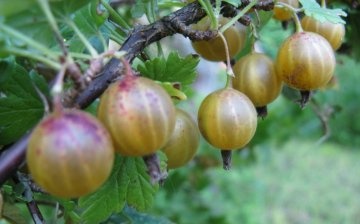

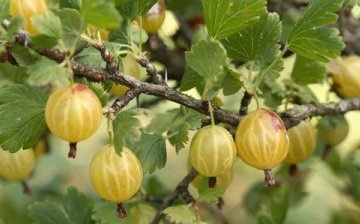
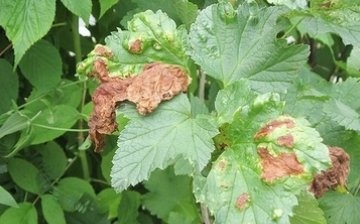
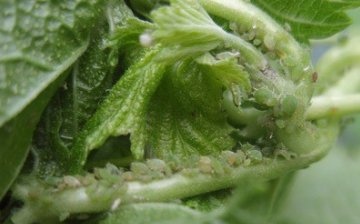
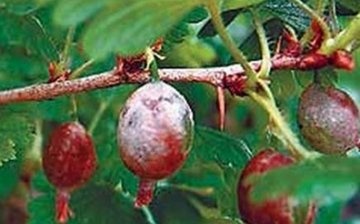






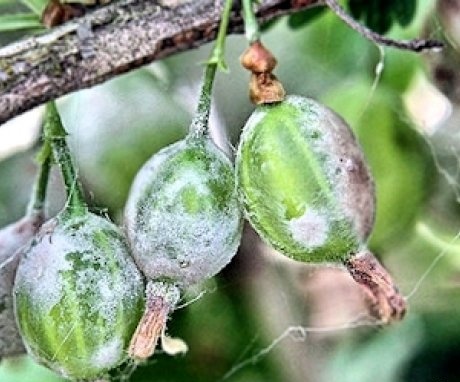
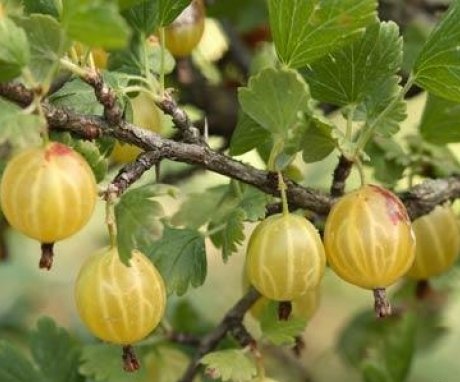
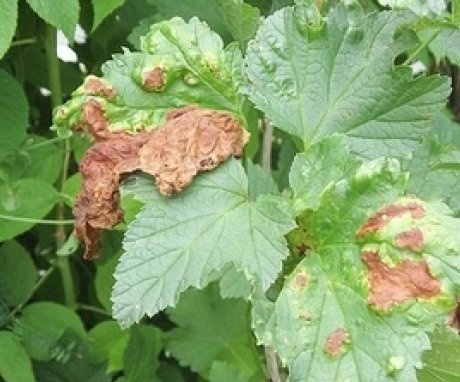

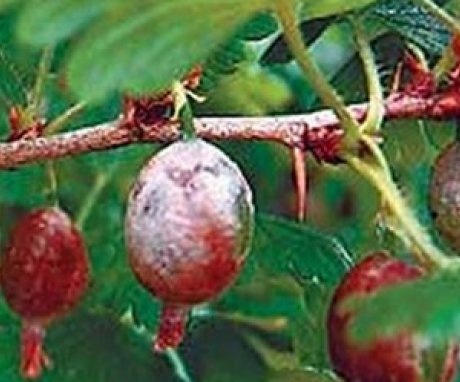
Are fungal diseases, in particular anthracosis, hazardous to health? In our garden area, most people have gooseberries covered with these spots.
Tell me, which varieties of gooseberries are less susceptible to most of the diseases described in the article?
Trying to grow gooseberries, unsuccessfully so far. That is powdery mildew, then gray rot .. I never thought what a delicate plant is. Currants, raspberries, everything stands, grows, gives birth, and the gooseberry is sick with one or the other. So in five years I have never reaped a harvest.
I do not know what is the reason, but our gooseberry is not susceptible to diseases, most likely they bought such a successful variety. Moreover, when we bought it ten years ago, the nursery advised a gooseberry without thorns. And I advise you! The variety, I really don't remember, was bought for a long time ...
thanks, I will look without thorns, I did not know that there is one)